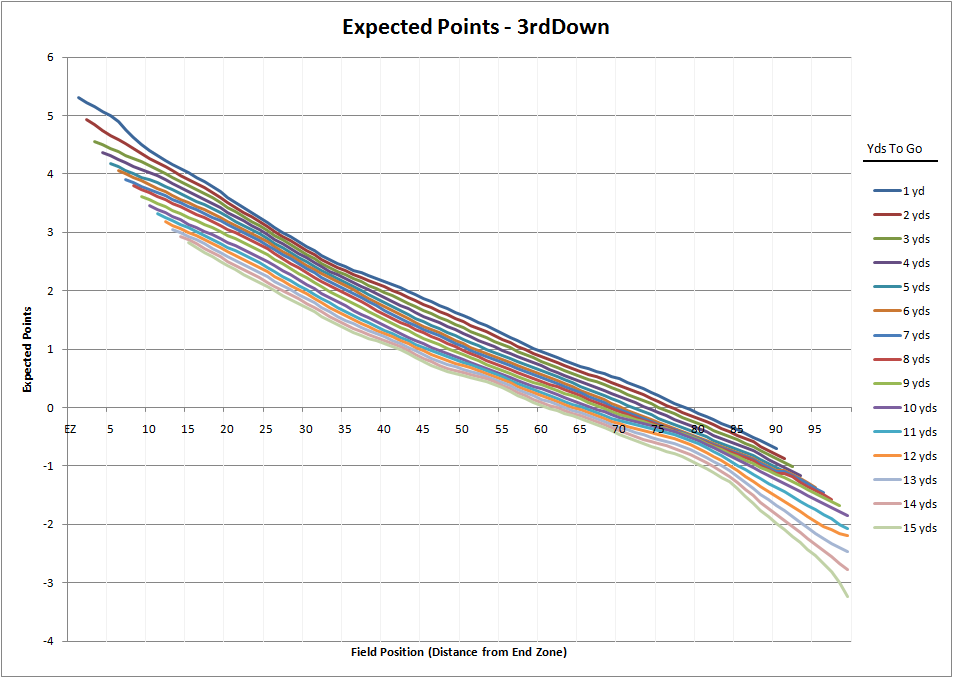For certain values of “within field goal range”. If they don’t gain a single yard, we’re talking about a 54 yard field goal, hardly impossible but also very far from a gimme.
So I think the “bird in the hand” truism better fits my argument than yours.
You’re right about expected points, and I used to read Brian Burke’s Advanced NFL Stats blog all the time, until his EPA system was bought up by ESPN. It appears the old posts are still there, though, fortunately:
1st and 10 from the 37: looks like about a 2.7 EPA. Agreed?
3rd and 1 from the 25: at least 3.2 EPA. Right?
The break-even point (where 1st and 10 would be equivalent to the 3rd and 1 from the 25) would be at about the 30 yard line. So Reid’s mistake was the equivalent of voluntarily starting the series seven yards further back from where he “should” be on 1st and 10. And not just any seven yards, but seven yards that make a field goal try much more difficult.
More straightforwardly, it was like spotting the other team a half point. Not lethal, but not advisable.
(I think in the calculations you made, you may have been forgetting to account for field position. I agree that just in terms of chance to get a first down, 3rd and 1 is only very slightly better than 1st and 10; but this also came with a “penalty” of moving back 12 yards.)
![]() Field goals are points too. Do you share the “never punt” philosophy of that famously eccentric coach? Personally, I think teams should punt less, but not never. That means some drives end up with zero points and voluntarily giving the ball to the other team (including the Chiefs in this case). How could you not see three points as superior to that? Get a FG on three different drives throughout the game, and you’ve got more points than a TD can match, even with a two point conversion.
Field goals are points too. Do you share the “never punt” philosophy of that famously eccentric coach? Personally, I think teams should punt less, but not never. That means some drives end up with zero points and voluntarily giving the ball to the other team (including the Chiefs in this case). How could you not see three points as superior to that? Get a FG on three different drives throughout the game, and you’ve got more points than a TD can match, even with a two point conversion.
Besides which, if you are desperate to score touchdowns, I submit that voluntarily retreating to 50% further from the end zone is not the best way to go about it. :dubious:
